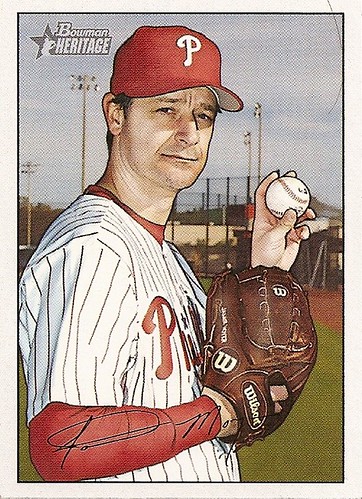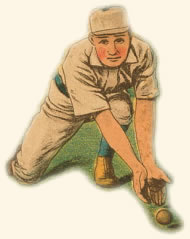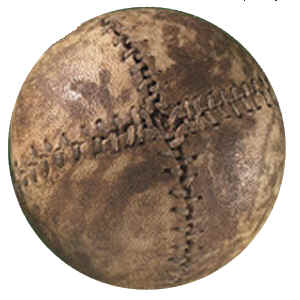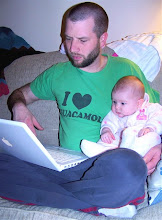Jamie Moyer was a bit younger then.
10. The Innings
There are nine innings in baseball. That's common knowledge. Unless the civil war hasn't happened yet, then you have to score 21 aces before you can go home. There were 3 outs per offensive strike, then the opposing team would get there attempt to come to strike, and so on. Until someone scored 21 points. In 1857 the powers that be settled on 9 of these innings, rather than a set score to reach, saving us from 7 hour games, for the most part.
Because the Amish cannot stay out that late.
9. The Gloves
Or the lack there of. Players simply were too manly to wear gloves. Early attempts by players to wear gloves resulted in childish name calling. Sticks and stones may break their bones, but in the 1870's words could hurt you more. It wasn't until 1875 that players came to their senses. Somewhat. The early gloves were leather with slightly padded palms. And no fingers. You ever stubbed a toe. You can stub fingers too.
pictured: not a sissy-girl
8. The Ball
The old horsehide, literally made of horsehide back then, was dark brown (as leather is when not dyed), and therefore, hard to see. The home team supplied the one ball that was to be used during a game, and the winner took home said ball as a trophy. This was significant as the balls were generally made by the players themselves. Mostly noticeable is the stitching. The "lemon peel" stitching was the common style until the 1870's when the "figure 8" design we all know now came into use. The oddest thing, in Alexander Cartwrights 1845 rules, a baseball hit over the fence was a strike, so balls would not be lost. Yeah, no homeruns.
Bonds would have come off as even more of a jerk.
7. The Umpire
Picked by the captains of each team from a list of respected locals and paid a princely sum of $5, umpiring was not an easy task during the dawn of the industrial era. These days there are four umpires in major league game. Those days there was one. Even Little League games have two umpires. The umpire not only had to be up to speed on whatever crazy rule change happened that week, he also was the end-all-be-all authority in the stadium. He had reign over fans, fines and rulings during his 21 aces on the field. To help him out, he was allowed to ask fans for their perspective on a call before rendering his decision, until 1882.
1882 also was the first year alcohol was sold in a stadium.
6. The Inside Pitch
Pitchers didn't throw in the upper 90's back then, so inside pitches were their only way to show their intimidation factor. Did I say "inside pitch"? I meant "hit the guy in the head." There was no Hit-by-Pitch rule until 1870. Prior to this, and having nine balls before a walk, pitchers would repeatedly plunk batters to get them off their game. Could you imagine that now. We'd have batters wearing football uniforms at the plate. Or ridiculous looking helmets. (Our hero, the 1800's batter of course had no helmet)
Shake it off. You're at bat.
5. The Pitchers
Goodness. The pitching rules. We'll just say they used to pitch from a box, much like the batters box, of varying sizes and distance, until 1893 when the pitching rubber was invented and the powers that be came to the completely logical distance of 60 foot 6 inches (everything in baseball has to be divisible by 3). Mounds eventually came into use, raised, lowered, raised and lowered again in 1969. And until 1884, pitchers had to throw underhand.
pictured: 1883 Cincinnati Reds
4. The Color
In 1947 Jackie Robinson broke the color barrier, becoming the first black player in Major League history, right? Wrong. Prior to the 1890's there were black players in baseball. Cap Anson was baseball's biggest star at the end of the 19th century. He was also one of history's biggest bigots. He started refusing to play in games where a black man also played. Not wanting to lose money due to Anson's no-showing games, clubs quickly released players of color. This "gentlemen's agreement" went unchallenged until after Hitler's (history's #1 bigot) atrocities came to light and people started feeling guilty about racism (somewhat.)
Nine gentlemen.
3. The Called Pitch
Did you know at one point in time, you could ask for a high or low pitch. Seriously, it was in the rules that before the pitch, the batter decided if he wanted a pitch up, or down in the strike zone. If the pitch wasn't deemed at the correct height it was a ball. Can't hit the low and away ball? It's okay just call for a high pitch. Just don't forget the guy with the ball can hit you about as many times as he wants to.
High or Low? Just reach the plate.
2. The Home Plate
Home plate used to be made of marble. Or Iron. Hopefully just wood. Remember there was no padding, and their were still collisions at home. And sliding. You ever slide noggin first into a plate of iron at full tilt? These days home plate is made of rubber, and is less likely to give you a concussion when you steal home.
Baseball is a rich man's sport these days.
Alright. How many strikes in an out? And how many balls before you can take your base? Try 4 strikes and up to 9 balls. That is, after the invention of strikes and balls. A rule was enacted in 1858 that allowed the umpire to call strikes on pitches he deemed hittable. The numbers varied on strikes and balls until 1899 when we got our current 3 strikes and 4 balls rule. These pitchers routinely pitched complete games, every game, AND had up to 9 balls and 4 strikes per batter? Could you imagine the pitch count on these guys?
I think I got another 400 pitches in me coach.












No comments:
Post a Comment